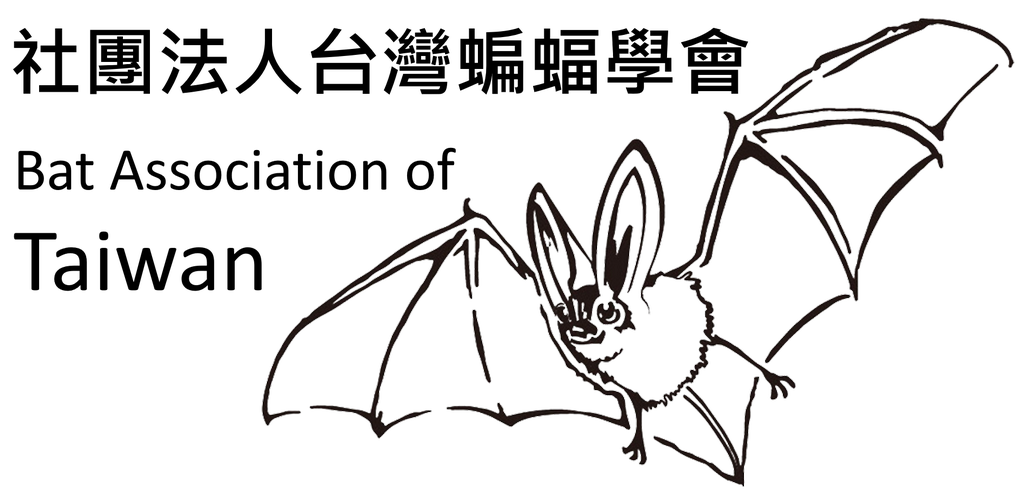蝙蝠研究
2013_台灣中部中海拔森林翼手目群聚組成與食物資源利用模式_盧昱辰
出版年份:2013
研究生:盧昱辰
分類:碩士論文
題目:台灣中部中海拔森林翼手目群聚組成與食物資源利用模式
Title:Community composition and food resource use of chiropteran assemblages in mid-elevation forests of central Taiwan
摘要:
翼手目 (Chiroptera) 為台灣哺乳動物中種數最多的一目,而台灣本島的蝙蝠全為食蟲性蝙蝠。 本研究調查食蟲性蝙蝠的食性與食物資源利用模式。 研究期間於2009年3月至10月間,分別在南投縣的惠蓀實驗林與蓮華池實驗林兩地以霧網 (mist-nets) 及豎琴網 (harp traps) 捕捉在森林中活動的蝙蝠,並收集捕獲蝙蝠的排遺,檢視其中殘留的昆蟲碎片進行食性分析。 並同時架設黑光誘蟲燈調查當地的夜行性昆蟲組成,作為蝙蝠食物資源的參考。 研究期間每月分別進行3至5個捕捉夜的調查,共記錄有12種蝙蝠,其中9種在兩地皆有出現,包括台灣葉鼻蝠 (Hipposideros terasensis Kishida, 1924) 、台灣大蹄鼻蝠 (Rhinolophus formosae Sanborn, 1939)、台灣小蹄鼻蝠 (Rhinolophus monoceros Sanborn, 1939)、台灣黃頸蝠 (Arielulus torquatus Csorba & Lee, 1999)、彩蝠 (Kerivoula titania Bates et al., 2007)、台灣管鼻蝠 (Murina puta, Kishida 1924)、隱姬管鼻蝠 (Murina recondita, Kuo et al. 2009)、家蝠 (Pipistrellus sp.)、與摺翅蝠 (Miniopterus schreibersii Hodgson, 1835)。 堀川氏棕蝠 (Eptesicus serotinus horikawai Kishida, 1924) 與長趾鼠耳蝠 (Long-Toed Myotis) 只出現在惠蓀,長尾鼠耳蝠 (Long-Tailed Myotis) 則只在蓮華池捕獲。 台灣葉鼻蝠與鼠耳蝠在此地區所佔的相對重要性最高。 在春、夏、秋三季皆有捕獲記錄的為台灣葉鼻蝠、台灣管鼻蝠、隱姬管鼻蝠、鼠耳蝠、與彩蝠。
昆蟲相組成於兩地間有顯著差異,惠蓀相較於蓮華池,半翅目 (Hemiptera)、與直翅目 (Orthoptera) 昆蟲的相對重要性較高。 蝙蝠的食性中以鞘翅目、半翅目、膜翅目與鱗翅目的昆蟲所佔的比例較高。 偏好度指數 (rank preference index) 顯示,蝙蝠對於不同的食物類群具有不同的偏好,且大多數的蝙蝠皆偏好取食膜翅目昆蟲。 不同種蝙蝠取食的食物類群比例不同,以及在活動時間上的分化,顯示蝙蝠種間有資源利用上的分化。
Abstract:
Chiroptera has the highest species number among mammalian orders in Taiwan. In Taiwan, all recorded bat species are insectivores, and their dietary compositions and food resource use were assessed in this study. This study conducted field works during March to October 2009 at Huisun Experiment Forest and Lienhuachih Experiment Forest in Nantou. Mist-nets and harp traps were used to survey the bat assemblages in forests. Fecal pellets from captured bats were analyzed to determine the diets of bats. While netting, two black light traps were set up to investigate the nocturnal insect compositions as the references of available food resources for bats. I conducted field works for three to five nights each month, and recorded 12 bat species. Nine bat species occurred in both areas, which included Formosan Leaf-Nosed Bats (Hipposideros terasensis Kishida, 1924), Formosan Greater Horseshoe Bats (Rhinolophus formosae Sanborn, 1939), Formosan Lesser Horseshoe Bats (Rhinolophus monoceros Sanborn, 1939), Formosan Yellow-Throated Bats (Arielulus torquatus Csorba & Lee, 1999), Titania's Woolly Bats (Kerivoula titania Bates et al., 2007), Formosan Tube-Nosed Bats (Murina puta Kishida, 1924), Faint-Golden Little Tube-Nosed Bat (Murina recondita Kuo et al., 2009), Pipistrelles (Pipistrellus sp.), and Japanese Long-Winged Bats (Miniopterus schreibersii Hodgson, 1835). Horikawa’s Brown Bats (Eptesicus serotinus horikawai Kishida, 1924) and Long-Toed Myotis were caught only in Huisun, whereas Long-Tailed Myotis occurred only in Lienhuachih. Both H. terasensis and Myotis spp. were the most important bat species in this area, and include M. recondita and K. titania, five species were recorded in all spring, summer, and autumn.
The insect compositions were different between areas. Hemipterans and orthopterans were more abundant in Huisun. Bats mainly fed on coleopterans, hemipterans, hymenopterans, and lepidopterans. The rank preference indices indicated that each prey items were not equally preferred in the diet, and most bat species had a preference on hymenopterans. Different diet compositions and different activity patterns between sympatric bat species indicated the presence of resource partitioning.
